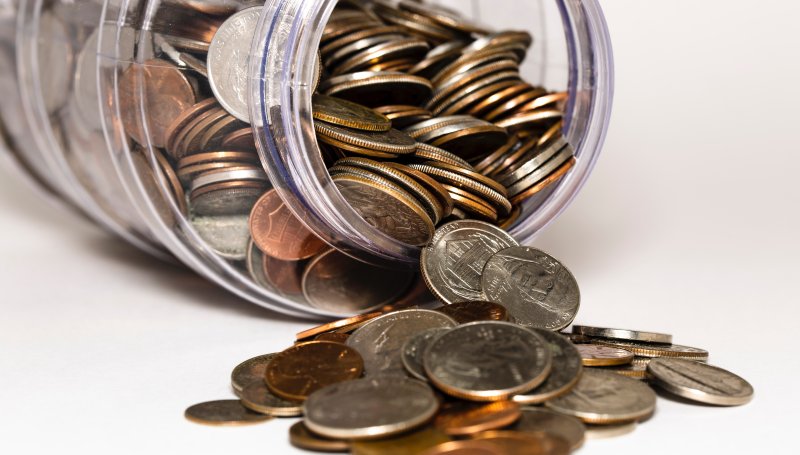
Circulation coins
Circulation coins are coins which are official tender within a given country. In Poland, their production is handled by the Mint of Poland, while the issuer is the National Bank of Poland. How long is the history of currently available coins in circulation? How does the production process of circulation coins work?
Circulation coins in Poland
Circulation coins issued by the National Bank of Poland are minted in nine denominations: 1 grosz, 2 grosz, 5 grosz, 10 grosz, 20 grosz, 50 grosz, 1 zloty, 2 zloty and 5 zloty. These coins were introduced to circulation by the NBP on January 1, 1995 under the management of the President of the NBP issued on November 29, 1994. The obverse of all 9 coins is decorated with the image of the eagle - the emblem of the Republic of Poland, as well as the year of issue, which is the actual year of minting. On the reverse side, there is a digit corresponding to the nominal value of the coin, the name of the monetary unit and another ornament for each denomination using the oak leaf motif.
What distinguishes individual coins from each other is also the material used for their production. The lowest coin denominations (1 grosz, 2 grosz and 5 grosz) were made of manganese brass, 10 grosz, 20 grosz, 50 grosz and 1 golden copper-nickel coins, and the highest coins (2 and 5 zlotys) were made of copper-nickel and bronze.
For many years, the image of the obverse of circulation coins remained unchanged. It was made for the first time on March 3, 2014, but only the smallest coins (1 grosz, 2 grosz and 5 grosz) were changed. In 2017, the circulation of coins with refreshed obverse, used for the first time in 2014, with denominations of 10 groszy, 20 groszy, 50 groszy and 1 zloty, was introduced. The image, unchanged since 1995, is characterized by the same only coins of the highest face values - 2 zlotys and 5 zlotys.
Who is involved in the production of circulation coins?
The production of circulation coins in Poland, issued by the National Bank of Poland, is exclusively the responsibility of the Mint of Poland. Interestingly, it is one of the most innovative mints in the world. It has 250 years of experience and thanks to the use of modern technologies is able to offer coins of the highest quality. As an entity with aspirations to become a leader in the international arena, the Mint of Poland fulfils the orders of not only the National Bank of Poland, but also the central banks of many other countries (including Georgia, Armenia, Colombia and the Dominican Republic).
Every year, exports account for about 60% - 70% of the value of sales of circulation coins, while the volume of production is at the level of 1.6 billion - 1.7 billion pieces. The high demand reported by the market, with limited production capacity, forced the Mint of Poland to introduce a three-shift system of work in selected sections. The leading position in the region and participation in numerous tenders allow us to conclude that despite systematic investments aimed at increasing the processing capacity, the situation will not change in the nearest future, and the coins produced in Poland will be sold in increasingly distant corners of the world.
How does the process of producing circulation coins proceed? How many people are involved in the coin design process and then its production? The secrets of coin production for foreign central banks can be discovered in the promotional film of the Mint of Poland.
Circulation coin for collectors
Apart from standard circulation coins, there are also commemorative coins in circulation, which commemorate important figures, events and anniversaries of the country's history. Since 1995, the National Bank of Poland has been issuing commemorative 2-zloty coins, and since May 2014 their place has been taken by commemorative 5-zloty coins. Despite their relatively high collector's value, these coins are legal tender in Poland and their purchasing power is determined by the denomination on the obverse.
















Zostaw komentarz